Santorini is one of Greece’s most photographed islands, often defined by the famous whitewashed buildings and blue domes of Oia and Fira. However, beyond the crowds and cruise ship itineraries lies another side of the island—one rich in authenticity, tradition, and quiet beauty. For the discerning traveler seeking a more immersive and tranquil experience, exploring Santorini’s lesser-known villages reveals an island brimming with charm, history, and soul. These hidden gems offer a deeper understanding of local life, untouched landscapes, and unique architectural gems. Here are seven must-see villages that lie off the beaten path, each with its own story and allure.
1. Pyrgos – The Timeless Sentinel
Perched on one of the highest points of the island, Pyrgos offers sweeping views of the caldera, vineyards, and surrounding villages. Once the capital of Santorini, this medieval village is a labyrinth of narrow alleyways, stone houses, and blue-domed churches that transport visitors to another era. The crowning jewel is the Kasteli (castle), a Venetian fortress dating back to the 13th century. Walking through Pyrgos is like wandering through a living museum, where every corner has a tale to tell. During Orthodox Easter, Pyrgos becomes the stage for a breathtaking spectacle where the entire village is illuminated by thousands of lanterns placed on rooftops and pathways. This event is one of the island’s best-kept cultural secrets. Visitors can also enjoy refined local cuisine at nearby restaurants like Selene, which marries tradition with innovation in a picturesque setting. Despite its growing popularity, Pyrgos maintains a relaxed, authentic feel, where locals still greet each other by name and life flows at a gentler pace.
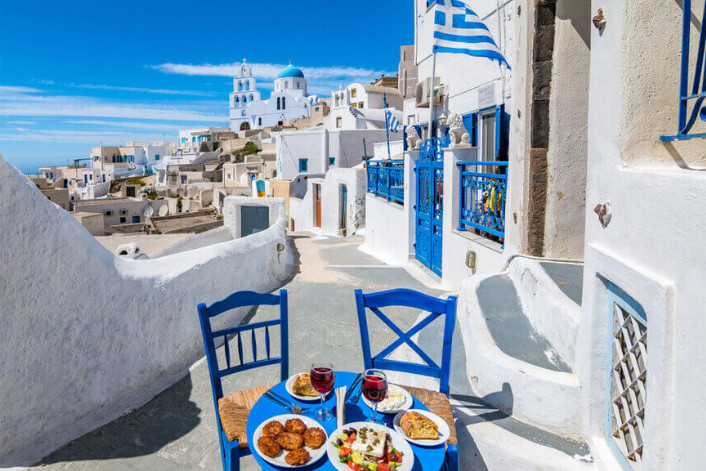
2. Emporio – The Labyrinthine Fortress
Emporio is Santorini’s largest village by land area and one of its oldest settlements. Located in the island’s interior, far from the cliffs and crowds, Emporio boasts one of the best-preserved kasteli (fortified castle towns) on the island. The heart of the village is a tightly packed network of alleyways and passageways that once served as protection against pirate invasions. The medieval charm is palpable in every stone arch and stairway. What makes Emporio particularly enchanting is how life continues within these historic walls. Locals still live in houses that date back centuries, and everyday moments—a woman hanging laundry, a cat sunbathing on a ledge, an old man tending his garden—take on poetic significance against the ancient backdrop. Visitors should not miss the nearby Tower of Nimborio and the exquisite Panagia Mesiani church with its remarkable bell towers. For a taste of tradition, small cafes like To Kafenedaki tou Emboriou serve homemade meze and locally sourced wines in a charmingly rustic setting.
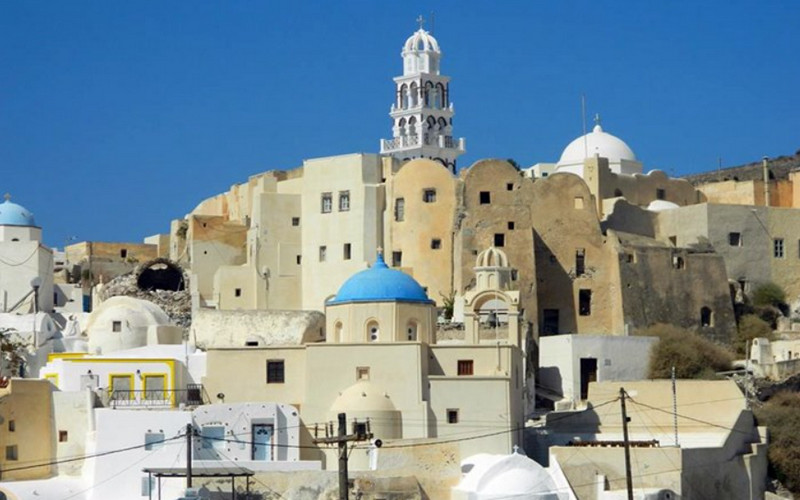
3. Megalochori – A Village of Bell Towers and Hidden Courtyards
Megalochori is a romantic village nestled amid Santorini’s famed vineyards, offering a blend of neoclassical elegance and rural tranquility. Its narrow cobbled streets are lined with high walls and hidden courtyards that speak of a bygone era of wealth and wine merchants. The village is known for its exquisite bell towers, including the much-photographed one that arches over the main path. There’s a deep sense of privacy and serenity here, where many traditional mansions have been lovingly restored into boutique hotels and residences. Exploring Megalochori is like stepping into a dream. Vine-covered gates lead to secret gardens, ornate doors open to cool stone courtyards, and everywhere the scent of jasmine mingles with the breeze. Nearby wineries such as Gavalas and Venetsanos invite visitors for tastings and sunset views over the vineyards. While more accessible than some of the other villages on this list, Megalochori still feels delightfully undiscovered, especially in the early morning or just after dusk.
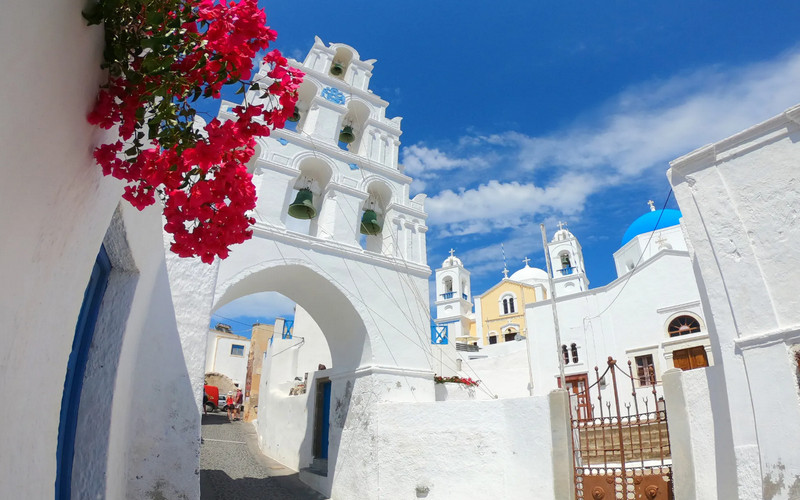
4. Finikia – A Whisper of the Past Near Oia
Just a short walk from bustling Oia lies Finikia, a peaceful village often overlooked by tourists in a rush to reach the caldera. This former agricultural settlement was once home to farmers and winemakers who supplied Oia’s more affluent residents. Today, Finikia offers a rare glimpse into traditional Santorinian life, unspoiled by time. Its ochre and terracotta homes are built into the hillsides, and instead of the stark Cycladic white, you’ll find warm earth tones and vivid floral accents. The village is nearly car-free, with narrow footpaths that wind through quiet alleys, past small chapels, and into central courtyards where neighbors gather to talk. One of the highlights is the 17th-century church of Agia Matrona, with its striking blue dome and serene atmosphere. Finikia is also home to a handful of excellent guesthouses and tavernas, such as Meze Meze, where you can enjoy traditional dishes in a peaceful setting. It’s the perfect place for a quiet retreat with easy access to Oia’s famous sunsets.
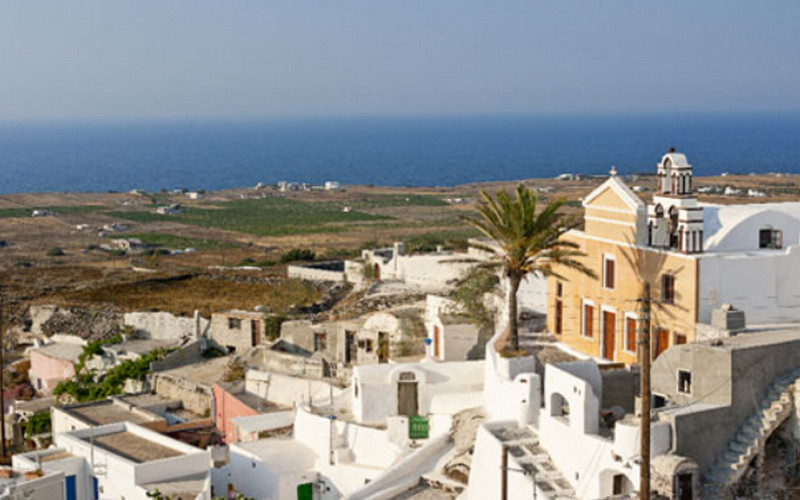
5. Akrotiri – Beyond the Ruins
Most visitors know Akrotiri for its famed archaeological site, the prehistoric Minoan city preserved under volcanic ash. But few take the time to explore the modern village nearby, which offers its own unique charm and sense of discovery. Akrotiri village is a quiet, humble settlement with an unpretentious spirit. Its winding roads are lined with whitewashed homes, family-run tavernas, and the occasional donkey making its way home. The village also offers direct access to some of the island’s most dramatic landscapes, including the Red Beach and the Venetian Lighthouse. While these spots can be busy during the day, staying in Akrotiri village allows visitors to enjoy them in the early morning or late evening, when the crowds have thinned and the light is golden. The views from the caldera-side cliffs are breathtaking, rivaling those of Oia but without the chaos. Dining here is also a treat—try traditional fish dishes at The Cave of Nikolas, set right on the beach in an actual cave carved into the rock.
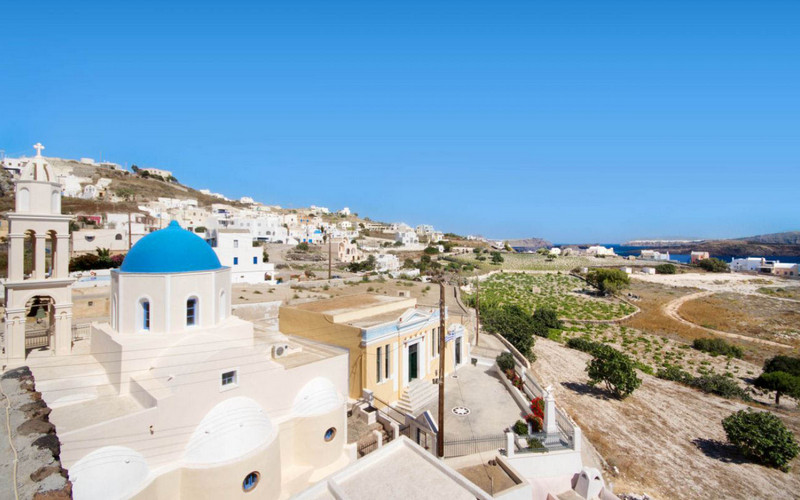
6. Vothonas – The Cave Village
One of Santorini’s most unusual and visually striking villages, Vothonas is located in a ravine and known for its troglodyte architecture. Many of the homes and churches here are built directly into the volcanic rock, creating a surreal landscape that feels more like a film set than a real village. Vothonas is often bypassed by travelers heading between Fira and Kamari, which makes it an ideal destination for those looking to step off the tourist trail. The village is also home to the fascinating Church of St. Anna and the Santorini Wine Museum, which is built underground and chronicles the island’s unique wine-making history. Vothonas has a quiet, almost mystical ambiance, particularly in the early morning when the sun filters through the ravine and casts soft shadows on the cave walls. The contrast between natural and man-made elements here is striking, and the village feels suspended between past and present.
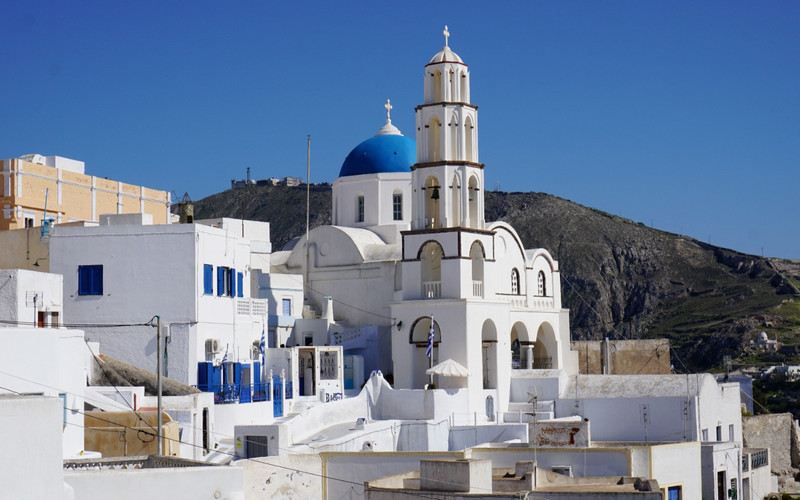
7. Mesa Gonia – The Soul of Santorini’s Winemaking Tradition
Mesa Gonia is a small but historically significant village known as the heart of Santorini’s winemaking tradition. Before the devastating 1956 earthquake, it was a thriving agricultural center. Many residents left afterward, and parts of the village fell into a state of romantic disrepair. In recent years, however, there has been a quiet revival. Mesa Gonia retains a sense of noble decay, with crumbling mansions and semi-abandoned churches standing as reminders of its former prosperity. The sense of time standing still is part of its magic. A visit here is not complete without stopping at the Art Space Winery and Gallery, a multi-layered space set within a 19th-century winery. It offers tastings of exceptional volcanic wines and features contemporary art exhibitions within its stone cellars. Mesa Gonia also connects easily to the nearby village of Exo Gonia, where the celebrated Metaxi Mas restaurant draws food lovers from all over the island. The two villages together offer an enriching experience for anyone interested in Santorini’s agricultural roots and artistic present.

While the caldera views of Oia and Fira are undeniably stunning, Santorini’s soul is best discovered in its quieter corners. These off-the-beaten-path villages reveal the island’s history, artistry, and daily rhythms in ways that mass tourism cannot replicate. Whether you’re wandering through the fortress alleys of Emporio, sipping wine in a cave house in Vothonas, or watching the sun dip behind the vineyards of Megalochori, you’re engaging with a side of Santorini that remains largely untouched. To explore these villages is to fall in love with the island all over again—for reasons deeper than a postcard view.





